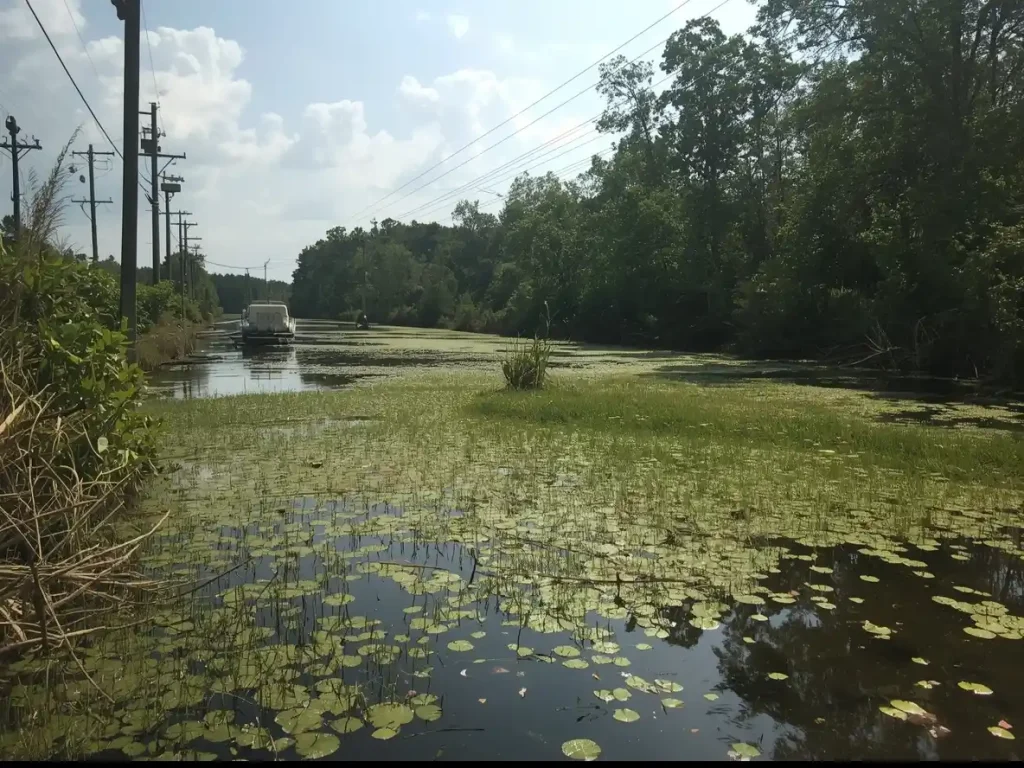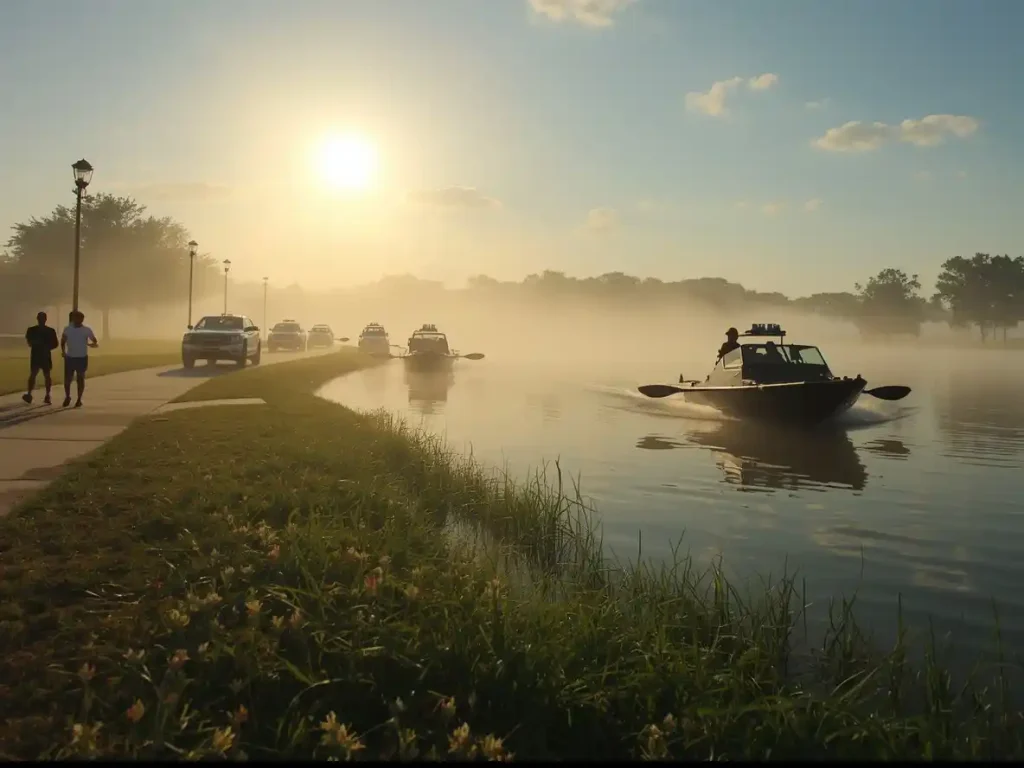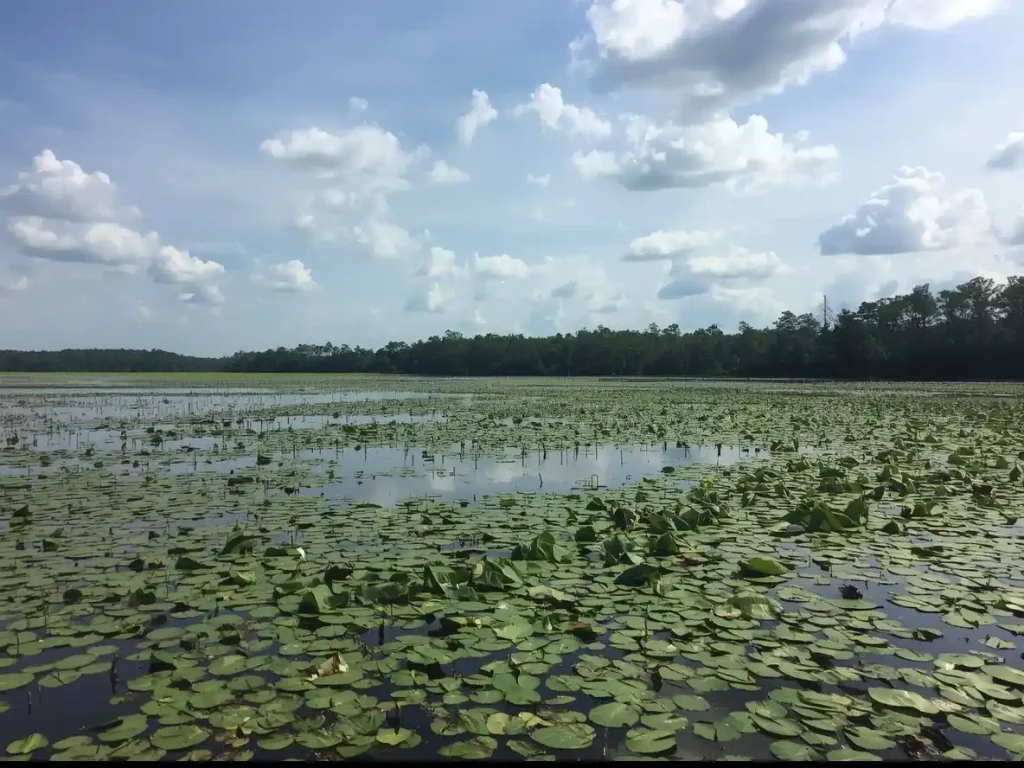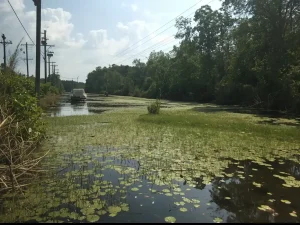7 Reasons Invasive Species Are a Bigger Threat After a Hurricane

hurricanes
The serene dawn at Orlando’s Lake Underhill Park is deceptive. Joggers pound the pavement and fishermen launch kayaks into the steamy summer air, all unaware of the silent war being waged just beneath the water’s surface. This isn’t a scene from a sci-fi movie; it’s the frontline of a critical ecological battle. Government vehicles with Department of the Interior tags line the shore, and a specially modified boat glides into the murky water. Their mission? To capture a slippery, snake-like invader: the Asian swamp eel. And their weapon of choice is electricity.
This aggressive response is driven by a terrifying new reality. Invasive species, supercharged by climate change and increasingly powerful hurricanes, are spreading through U.S. waterways at an alarming rate, threatening native ecosystems and infrastructure. The battle at Lake Underhill is a microcosm of a much larger war, one where scientists are using innovative and shocking tactics to fight back against an encroaching enemy.
The Unseen Enemy: Meet the Asian Swamp Eel
The target of this unusual operation is not a typical fish. The Asian swamp eel (Monopterus albus) is a bizarre and resilient creature that has established a troubling foothold in Florida and is creeping northward. As Dr. Daniel Slone, a USGS research ecologist, clarifies, this isn’t a true eel. “The Asian swamp eel does not have a dorsal fin and does not have reduced legs,” he states, distinguishing it from native species it might be confused with. This biological outlier is a nightmare for wildlife managers: it can breathe air, survive in mud during droughts, travel overland, and is a voracious predator, outcompeting native fish for food and habitat.
Their presence is more than just an ecological imbalance; it’s a symptom of a broader problem. These eels are believed to have been introduced through human activity, often released from live food markets or used as bait for large game fish. Once free, they reproduce rapidly and disperse, their spread now potentially accelerated by extreme weather events that connect previously isolated bodies of water.

The Shocking Tactic: Electrifying the Water to Stun Invaders
The primary method for assessing and controlling these invasive fish is as dramatic as it sounds: electrocution. The researchers’ johnboat is transformed into a high-tech hunting vessel. Metal arms protrude from its sides, dangling electrodes into the water. These are connected to a massive gas-powered generator on deck. Howard Jelkes, a retired USGS fish biologist, explains the careful process: “We’re using just enough voltage in water to make the fishes immobile so they can be collected.”
The safety protocol is strict and serious. The entire boat becomes a grounded cage, protecting the crew inside. But the warning is clear: “Under NO circumstance should you place anything in the water, NO parts of your body, NO metal objects, NOTHING when the generator is running.” When activated, the system sends a pulsed DC current into the water, creating an unnerving hum and temporarily stunning any fish within its field, forcing them to the surface where they can be netted.
A Slimy and Elusive Quarry
Even with advanced technology, catching the swamp eel is a challenge. They are nocturnal, excel at hiding in dense vegetation and rocky crevices, and are, in the words of the biologists, “super slimy.” A thick coat of mucus makes them almost impossible to hold. During the Lake Underhill operation, the team saw many more than they could catch. Biologist Wesley Daniel noted their evasive tactics: “The second we start electrofishing and hitting them with electricity, they’re going straight back down into the rocks which makes it impossible to net them.” Despite the difficulties, the team successfully captured several eels, providing vital samples for further study. Each capture is a small victory, a critical data point in understanding the enemy.

Beyond the Eel: A Flood of Invasive Threats
The swamp eel is just one player in a much larger invasion. Scientists at the USGS Wetland and Aquatic Research Center track over 1,400 non-native species. Ian Pfingsten, a botanist with the Nonindigenous Aquatic Species Database, highlights other major concerns: the toxic Cuban tree frog, infrastructure-choking alligator weed, and the giant applesnail, an agricultural pest and carrier of human parasites. Each species poses a unique threat, but they share a common pathway: human-mediated dispersal, often amplified by nature’s fury.
The Hurricane Highway: How Storms Are Accelerating the Invasion
This is where climate change becomes a central character in the story. Rising flood events are acting as a superhighway for invasive species. The powerful Hurricanes Helene and Milton in 2024 are prime examples. Pfingsten’s team uses sophisticated “Flood and Storm Tracker” (FaST) maps to predict how these storms might displace species. The data is staggering. Helene’s flooding was estimated to potentially aid in the dispersion of 222 non-native species, about 90 of which are classified as highly invasive.
While it’s difficult to prove a single eel was moved by a single storm, the precedent is clear. Pfingsten references Hurricane Harvey’s impact on Texas, where historic flooding merged two major rivers, creating entirely new pathways for aquatic life to migrate. “We’re just providing that information to pinpoint areas on the landscape where there could potentially be a new introduction,” he said. This predictive modeling is crucial for preparing rapid response teams and allocating resources to the next potential hotspot.

The Uphill Battle: Data, Diligence, and the Unknown
The work is painstaking and often fraught with uncertainty. The eels captured at Lake Underhill will be studied for their diet, tolerances, and genetics to better understand how to manage them. Yet, one of the most perplexing questions remains: how did they get there? The first recorded swamp eel in the Orlando region was found in 2023. Catching over a dozen in a single morning in a lake with no obvious water connection to the first sighting points to a sinister and efficient spread, potentially aided by floodwaters.
“That is the tricky part, right?” Pfingsten acknowledges. “We wouldn’t be able to definitively claim whether we are able to prove that happens or not.” This admission underscores the complexity of the problem. The fight is not just against the species themselves, but against the invisible currents of weather and water that carry them. It’s a battle of observation, data analysis, and relentless fieldwork.
The Critical Importance of the Fight
The electrofishing operation on a humid Orlando morning is more than a local survey; it is a vital skirmish in a national conflict. Invasive species cost the U.S. economy billions of dollars annually in damages and control costs. They disrupt commercial and recreational fishing, damage infrastructure, threaten water supplies, and irrevocably alter native ecosystems. The work of these scientists—in the water, in the lab, and with complex maps—is our first and best line of defense. It’s a shocking, slimy, and utterly essential mission to protect the delicate balance of our natural world from a flood of uninvited guests.
Table of Contents
Reference Website:
https://edition.cnn.com/2025/09/08/climate/florida-invasive-species-climate-change-flooding
Our Related News Website:
Sports: Sport Flash
World News: The News Grid
Environment News: Eco Alert
Business News: Biz Trend Now
Daily News: Unbiased Daily
Realm News: Real Time Realm
Retrun to our Homepage






